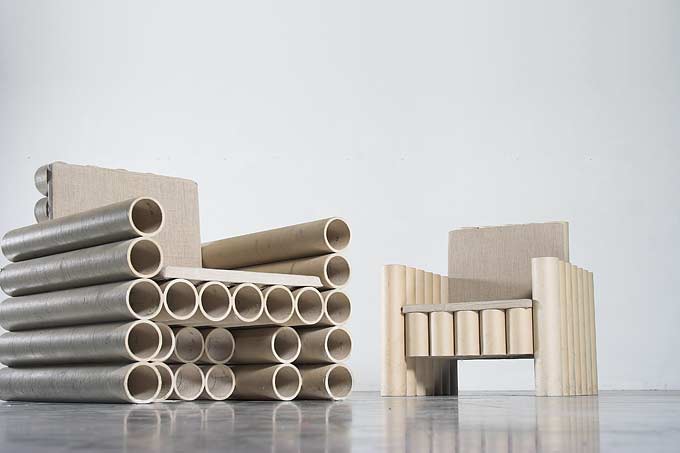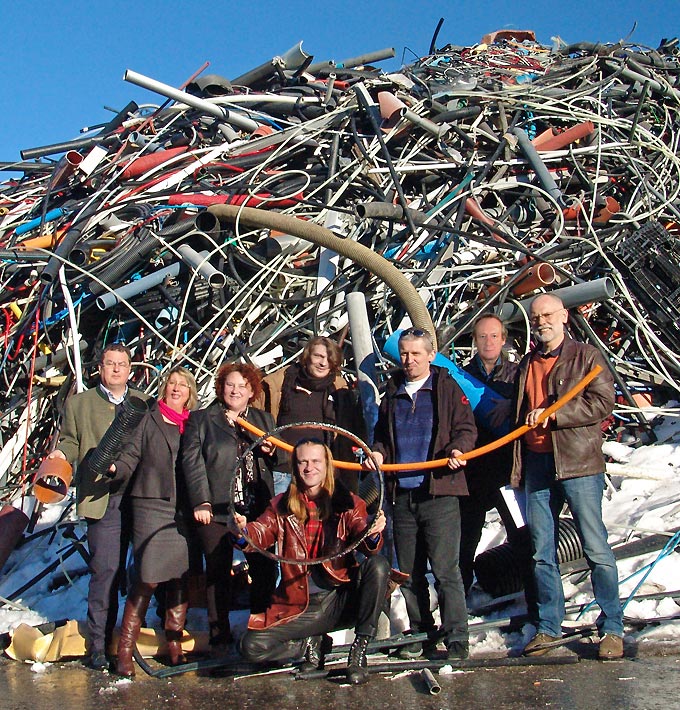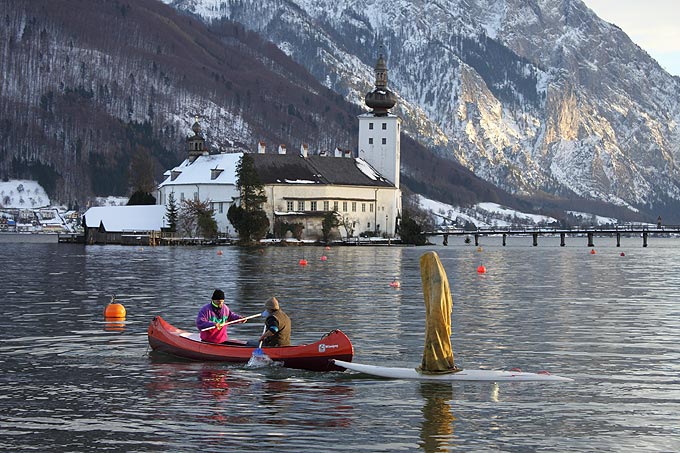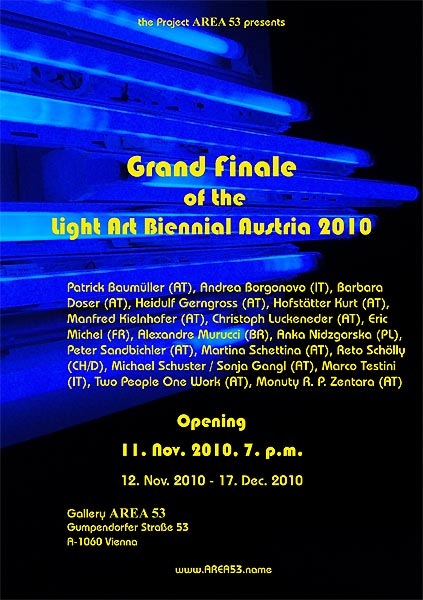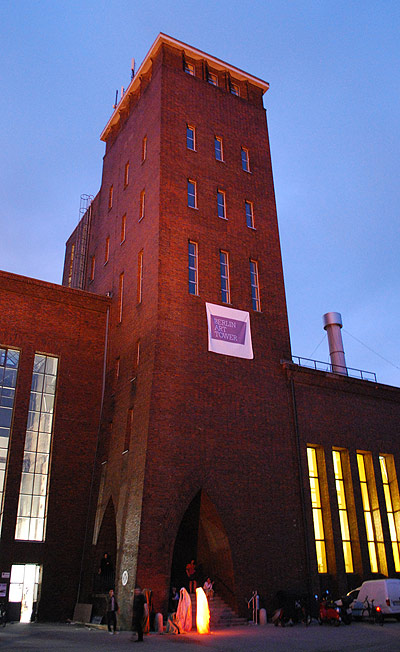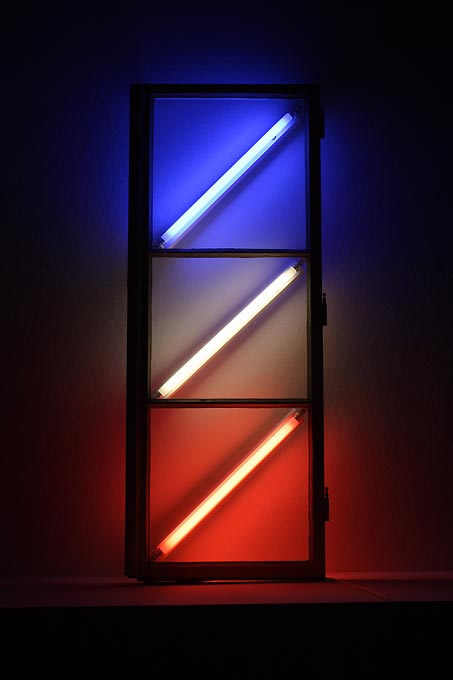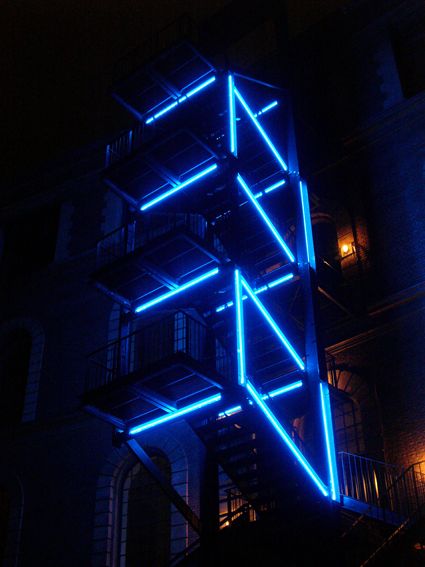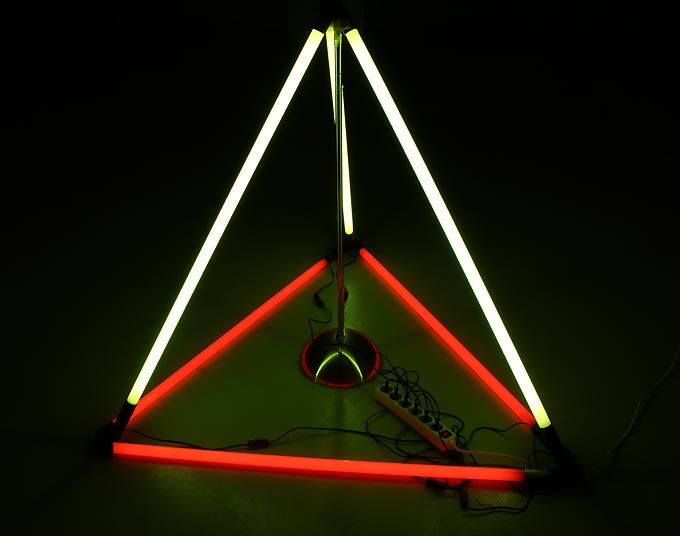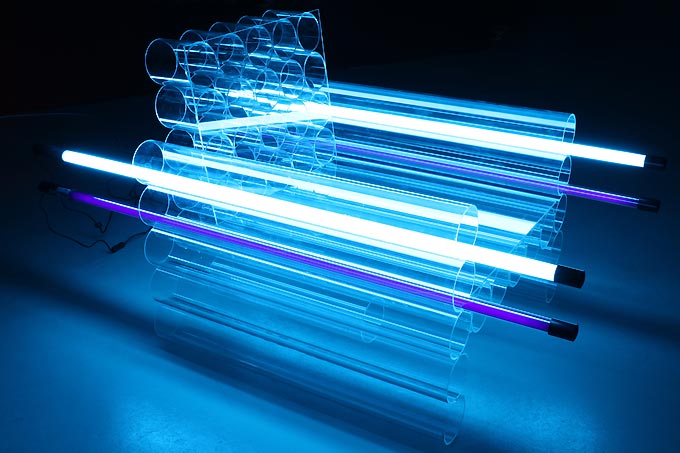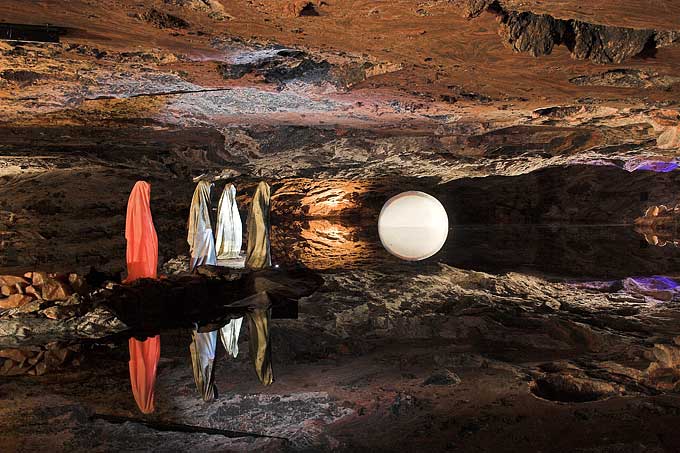Interlux chair by Manfred Kielnhofer – Design auction
16. April 2011
http://www.dorotheum.com/auktion-detail/auktion-8878-design/lot-1113051-interlux-chair.html
Furniture installation by Manfred Kielnhofer
16. April 2011
The Austrian artist and designer Manfred Kielnhofer has produced a new series of tables, lights and chairs. The result is pretty spectacular.
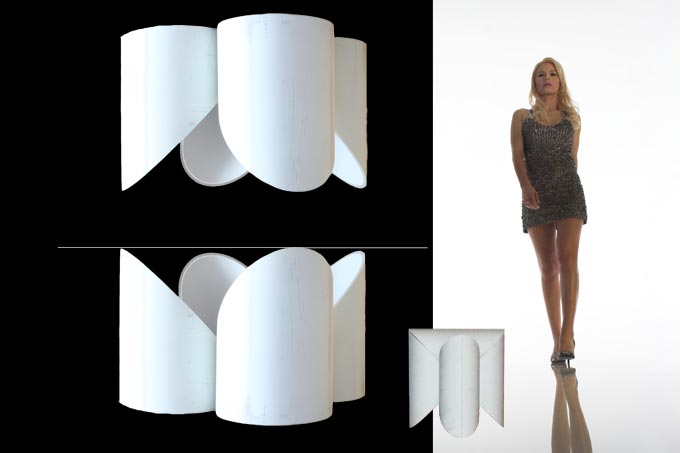
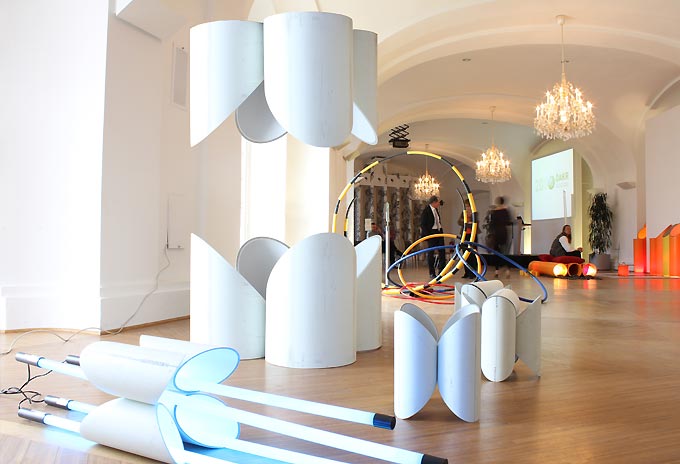
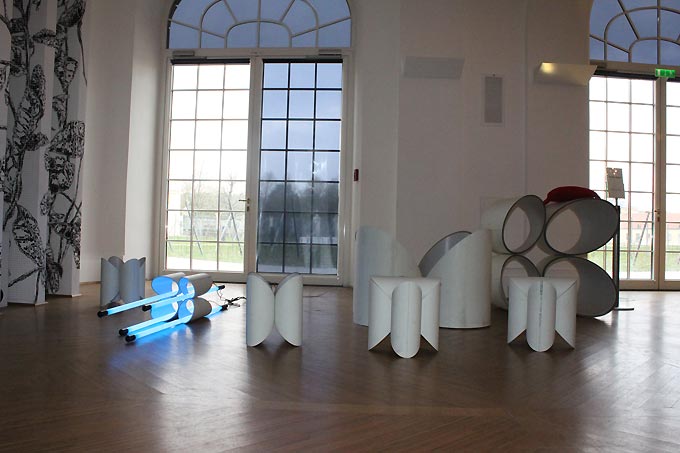
ÖAKR recycling competition, Schloss Schönbrunn vienna
http://kielnhofer.com
Recycling goes Kunst ÖAKR Kunstwettbewerb – vom Rohrstück zum Kunststück
10. März 2011
ÖAKR Recycling Competition – From Pipe Piece to Piece of Art
Österreichischer Arbeitskreis Kunststoffrohr Recycling ÖAKR celebrates its 20th anniversary this year! A perfect occasion for presenting the closed loop of plastic pipe use und reuse in an out-of-the ordinary fashion. The art contest „Kunststoffrohr Recycling einmal anders – vom Rohrstück zum Kunststück“ approaches plastic pipe recycling from a different perspective and turns „pipe pieces into pieces of art.
The participating Austrian artists Manfred Kielnhofer, Witold J. Pawlik, Arni Pichler, Christopher Rhomberg and Herbert Schmid were invited to Reststofftechnik, a partner of the ÖAKR System, to trash-pick discarded water supply, sewer, drainage, gas, heat and sanitary pipes.
We are all curious to see what interesting works of art will emerge until 5th April, the day oft he anniversary celebrations, and who the audience at the Convention Centre of Schönbrunn Castle will choose as the winner. ÖAKR is a collective system comprising the companies Agru, Dietzel Univolt, Egeplast, Geberit, Ke Kelit, Kontinentale, Glynwed, Martoni, Pipelife, Poloplast, Rehau and Uponor.
http://www.oeakr.at/content/presse/
http://www.flickr.com
Im Jubiläumsjahr 2011 lässt der ÖAKR (Österreichischer Arbeitskreis Kunststoffrohr Recycling) den Recycling-Kreislauf von Kunststoffrohren zu Kunst werden. Anlässlich des 20-jährigen Bestehens veranstaltet er den Kunstwettbewerb „Kunststoffrohr Recycling einmal anders – vom Rohrstück zum Kunststück“. Fünf Künstler, die zum Teil seit Jahren mit dem Werkstoff Kunststoff arbeiten, wurden dazu eingeladen, aus ÖAKR-Sammelgut Kunstobjekte zu gestalten:
- Christopher Rhomberg und
- Witold J. Pawlik aus Wien,
- Manfred Kielnhofer aus Linz,
- Arni Pichler aus Schauersberg und
- Herbert Schmid aus Gunskirchen.
Materialauswahl beim ÖAKR-Systempartner Reststofftechnik
Aus der Vielzahl ausgedienter Wasser- , Abwasser-, Abfluss-, Dränage, Gas-, Heizungs- und Sanitärrohre, Kabelschutz-, Elektro- und Installationsrohre, die am Sammelplatz vom ÖAKR-Systempartner Reststofftechnik in Henndorf/Wallersee in unterschiedlichsten Farben und Dimensionen zur Verfügung standen, wählten die Künstler ihr Material aus. In den nächsten Wochen entstehen in den Ateliers interessante Werke aus den Altrohren und Verarbeitungsresten. Man darf schon gespannt sein auf imposante Objekte wie etwa Lichtskulpturen, Rauminstallationen oder Möbel aus Kunststoffrohren.
Im Rahmen der Jubiläumsveranstaltung im Schloss Schönbrunn am 5. April 2011 werden die Künstler ihre Werke präsentieren und die Festgäste ein Siegerobjekt küren.
http://www.poloplast.com
The Timeguards sculpture by Manfred Kielnhofer at the artmagazine visualartbeat
28. Februar 2011
http://visualartbeat.com
timeguards_sculpture_kielnhofer_visualartbeat
Wächterwanderung Gmunden am Traunsee
5. Januar 2011
Wächterwanderung
Gmunden am Traunsee, Fr. 7. Jänner 2011 um 17.00Uhr
Treffpunkt, Stationen:
1. Barix, Vintage and art, Calla, Waldo, Esplanade 14
2. Badewiese Esplanade, neben Yachthafen
3. Elfriede Würth, Individualistin, Wunderbergstrasse 2
4. Atelier Fritz Knoll, Designlampen, Mauergasse 2
www.barix.at www.lichtkunst.soup.io www.kielnhofer.com
Die Wächter des Lichtes von Manfred Kielnhofer.
Manfred Kielnhofer has created a lighted series of his ghostly Time Guards. Representative of Christian iconography and perhaps something out of Dante’s Inferno, these are certainly not your average Christmas lights. The life-sized sculptures that ooze a feeling of melancholy are equipped with energy saving lamps 32W. The lighted ones are slightly less depressing and creepy, no?
http://design-milk.com/light-guards-by-manfred-kielnhofer/
Grand Finale of the Light Art Biennial Austria 2010
7. November 2010
Grand Finale
of the
Light Art Biennial Austria 2010
Patrick Baumüller (AT), Andrea Borgonovo (IT), Barbara Doser (AT), Heidulf Gerngross (AT), Hofstetter Kurt (AT), Manfred Kielnhofer (AT), Christoph Luckeneder (AT), Eric Michel (FR), Alexandre Murucci (BR), Anka Nidzgorska (PL), Peter Sandbichler (AT), Martina Schettina (AT), Reto Schölly (CH/D), Michael Schuster / Sonja Gangl (AT), Marco Testini (IT),
Two People One Work (AT), Mounty R. P. Zentara (AT)
Opening
11. Nov. 2010, 7. p.m.
Gallery AREA 53
Gumpendorfer Straße 53
A-1060 Vienna
+43 676 621 5660
theAREA53@gmail.com
www.AREA53.name
http://lightart-biennale.com
12. Nov. 2010 – 17. Dec. 2010
Tuesday – Friday, 3.00 pm – 6.30 pm
Saturday by appointment
The „Biennale für Lichtkunst Austria 2010“ is a non-commercial biennial of light art-projects and the first biennial of light art that happende in Austria. The biennial 2010 has the slogan „private light in public spaces“ and runs in several Austrian cities in the autumn of 2010. It started at September 1st in Linz, nearly at the same time as the ars electronica festival which started at September 2nd. The organisation is done by Gallery Artpark Linz, consultant is Peet Thomsen (USA/Copenhagen/Linz). The selection of the artists was curated. Members of the jury were artists and curators, one of them Laura Plana Gracia from Spain.
This first Biennial for Light Art in Austria wants to generate a cut surface between society and art. The spontaneous conjunction with art in public spaces leans on the art concept of Joseph Beuys from 1965 “How to define the paintings to the dead rabbit” in Düsseldorf. A dialogue should arise between art and the public. The concept was made by the two founders of the Light Art Biennial, Manfred Kielnhofer and Martina Schettina.
Art project AREA 53 by TWO PEOPLE ONE WORK
Karin Sulimma & Mounty R. P. Zentara
Die Biennale für Lichtkunst Austria 2010 auf der Kunstmesse BERLIN ART TOWER
26. September 2010
Biennale für Lichtkunst Austria 2010
Die Lichtkunstbiennale Austria 2010 ist zu Gast in Berlin bei der Kunstmesse BERLIN ART TOWER vom 06. 10. bis 10.10 2010 www.berlin-arttower.de
Alte Kindl Brauerei / Neukölln
Die erste Biennale für Lichtkunst Austria 2010 trägt das Motto „private light in public spaces“. Im Sinne der Aktion von Joseph Beuys in Düsseldorf 1965 „Wie man dem toten Hasen die Bilder erklärt“, wird die unerwartete Konfrontation des Publikums mit Lichtkunst im öffentlichen Raum zum zentralen Gegenstand der Ausstellung.
Es wird eine Auswahl der über 50 Künstler aus 4 Kontinenten und 21 Ländern gezeigt.
Heidulf Gerngross (AT), Manfred Kielnhofer (AT), Christoph Luckeneder (AT), Peter Sandbichler (AT), Martina Schettina (AT), Two people one work, Karin Sulimma, Monuty R.P. Zentara (AT), Eric Michel (FR), Alexandre Murucci (BR), Reto Schölly (CH/D)
Mit freundlichen Grüßen
www.lightart-biennale.com
Light Art Biennale Austria 2010
Berlin Art Tower art fair from 06th to 10th October 2010 www.berlin-arttower.de Alte Kindl Brauerei / Neukölln
This first Biennial for Light Art in Austria wants to generate a cut surface between society and art. The spontaneous conjunction with art in public spaces leans on the art concept of Joseph Beuys from 1965 “How to define the paintings to the dead rabbit” in Düsseldorf. A dialogue should arise between art and the public. The show with over 50 artists from 2 countries runs under the title „private light in public spaces“. A versatile overview is presented at Berlin Arttower art fair.
Heidulf Gerngross (A), Peter Sandbichler (A), Christoph Luckeneder (A), Martina Schettina (A), Manfred Kielnhofer (A), Two people one work, Karin Sulimma, Monuty R.P. Zentara (A), Eric Michel (FR), Alexandre Murucci (BR), Reto Schölly (CH/D)
Best regards.
www.lightart-biennale.com
Mounty R. P. Zentara
21. August 2010
Martina Schettina
21. August 2010
Lichtobjekt – „Tetraeder“
von Martina Schettina.
6 Leuchstäbe Länge á 136 cm. Langenzersdorf, 2010
Der regelmäßige Tetraeder ist der erste der fünf platonischen Körper, genauer ein (dreidimensionales) Polyeder (ein Vielflächner) mit vier (kongruenten) gleichseitigen Dreiecken als Flächen, sechs (gleichlangen) Kanten und vier Ecken, in denen jeweils drei Flächen zusammentreffen. Die Darstellung des Tetraeders erfolgte durch 6 Leuchtstäbe als Lichtobjekt. Die Zahl 6 ist eine besondere Zahl: Sie ist die kleinste vollkommene Zahl: 6 = 1 + 2 + 3. 6 ist die Fakultät von 3: 6 = 3! = 1 * 2 * 3, was bemerkenswert ist, weil es keine andere Zahl gibt, bei der das Produkt dreier Zahlen gleich der Summe derselben Zahlen ist. Ebenso ist
Die Gleichung x3 + y3 + z3 = 6xyz hat als einzige Lösung x=1, y=2 und z=3. Auch ist
Schließlich ist 6 eine Dreieckszahl. D. h. legt man Spielsteine in einem Dreieck an, 1, 2, 3, 4, pro Reihe, dann ist 6 die dritte Dreieckszahl 1+2+3 = 6.
Die Zahl 136, die Länge der einzelnen Leuchtstäbe, ergibt sich aus der Überlegung, dass die Summe beiden ersten vollkommen Zahlen, also 6 und 28, mit der Flächenzahl 4 des Tetraeders multipliziert, 136 ergibt: (6+28) x 4 = 136.
http://schettina.com
Manfred Kielnhofer
21. August 2010
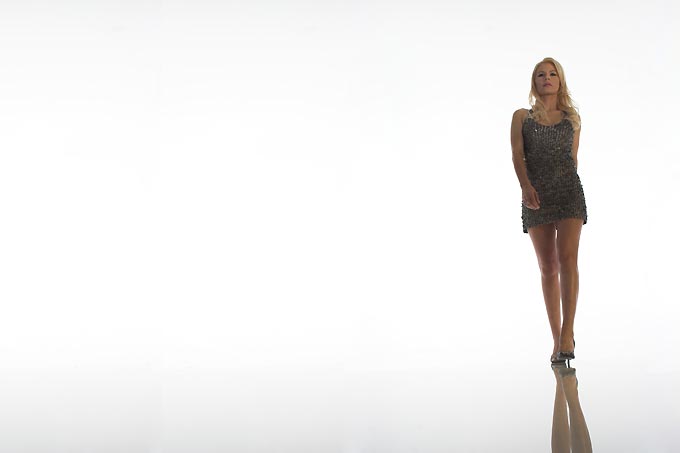
Light room, water reflection at the gallery Artpark – photography and light art concept by Manfred Kielnhofer
Interlux light art electric chair by Manfred Kielnhofer
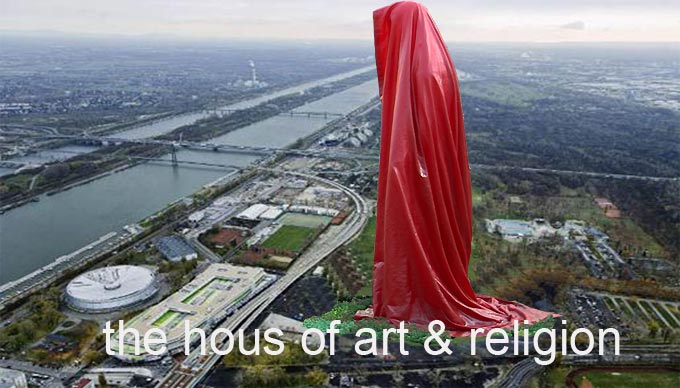
Konzeptstudie in Arbeit: Museumsbau für Kunst und Religion
The guardians of time at the salt mine Altaussee in Austria – sculpture and photography by Manfred Kielnhofer
http://kielnhofer.com
http://timeguards.com
http://kielnhofer.at
http://fotopark.at
http://artpark.at
http://contemporary-art.at
http://lightart-biennale.com
